Autographic Records
Autographic records are, in most cases, types of output produced by instruments recording data about specific elements
For example a barogram is produced by a barograph and is a continuous trace of changes in pressure.
The barograph measures pressure and then records it onto a sheet of specially printed graph paper wrapped around a drum using a pen.
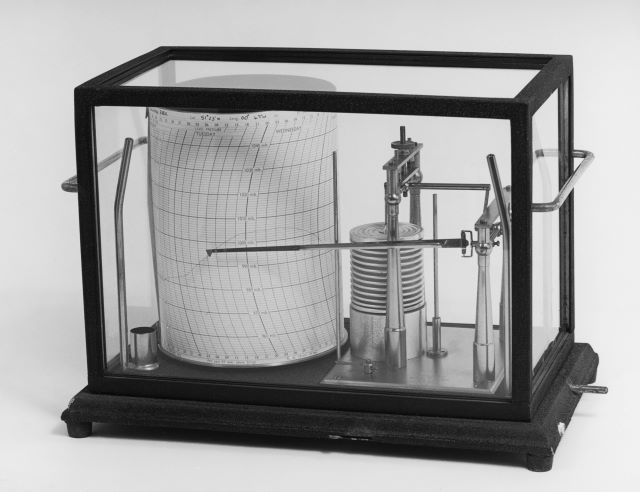
Example of an autographic instrument, (a barograph).
Many of the other autographic devices work in a very similar way although one significant exception are sunshine cards where the mark left on the card is produced by a Campbell Stokes sunshine recorder which focuses sunlight through a glass sphere and uses the resulting beam to burn a line into the card during the period when the sun is shining.
The length of time covered by each record type varies greatly. For example sunshine cards will only cover one day, barograms can cover a week and anemogram may include as much as a complete month on a roll.
Autographic records are regarded as the original data record for each element however they are harder to read and understand than the data types in the section above. Those marked with an asterisk (*) are more likely to require you to have subject specific knowledge, or request assistance from someone who has.
(i) Hyetograms* – duration of periods of rainfall, intensity and amount

Hyetogram showing rainfall periods of, intensity (gradient of line), and total.
(ii) Hygrograms – humidity rise and fall

Hygrogram showing variations in humidity.
(iii) Anemograms* (rolls) – change of wind speed and direction
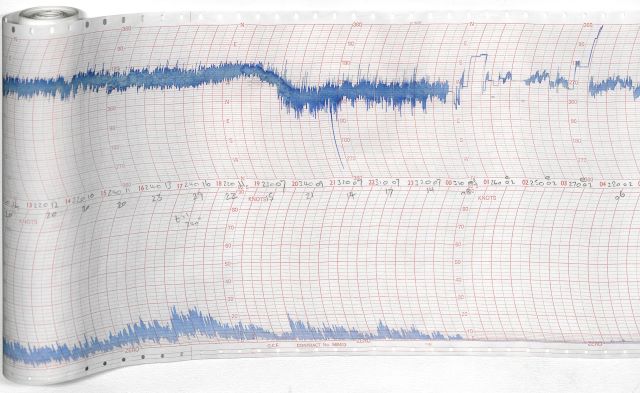
Anemogram roll. Top = wind direction in degrees. Bottom = wind speed in knots.
(iv) Barograms – pressure rise and fall
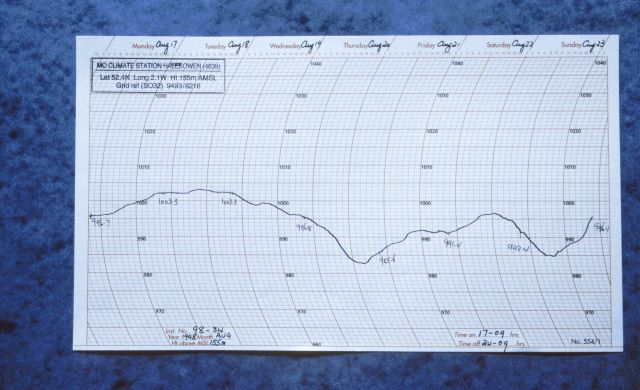
Barogram, also known as a “barograph trace”.
(v) Thermograms – temperature rise and fall

Example of a thermogram also known as a “Thermograph Trace”.
(vi) Sunshine cards – duration of periods of sunshine and total amount (per day)
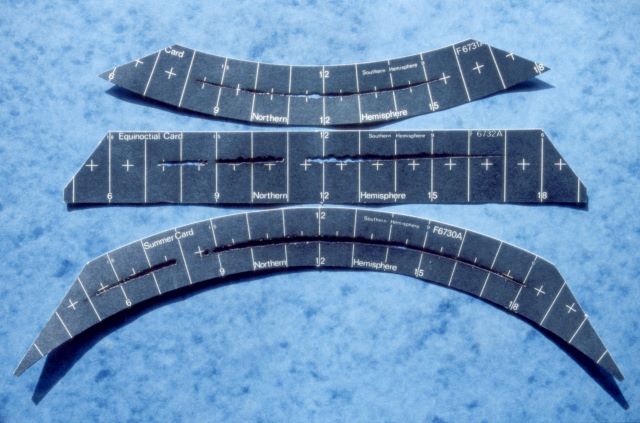
Sunshine cards – different shapes are used during winter, spring/autumn and summer.
(vii) Bathythermograph – sea temperature variation with depth
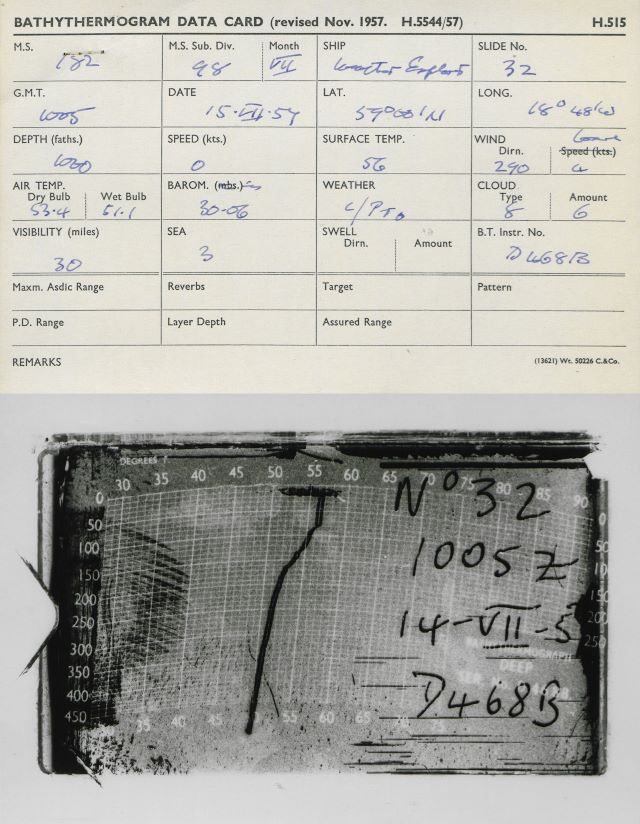
Bathythermograph, also known as “Bathythermogram data card”.
Most useful for
Autographic records are useful for accessing the primary data source in order for example to check a specific value or look at the values recorded on specific days of interest for a particular element such as maximum gust speed, rainfall rate or periods of sunshine during a day.
Things to bear in mind
Many of these record types are on large format documents such as anemograms which are on rolls of paper several metres long. If you need to look at a number of these types of record it may be best to consider whether another type of record can answer your question more easily. For example some of the record types are also available as tabulated data e.g. wind tabulations, which you may find more suitable
for your requirements.
If you need assistance from a subject specialist and you are planning to view records held at Belfast or Edinburgh you will need to arrange this in advance of your visit. Please note that it may be at least a week before a member of Met Office staff can attend the archive to provide assistance so make sure you plan
ahead if this is required.





